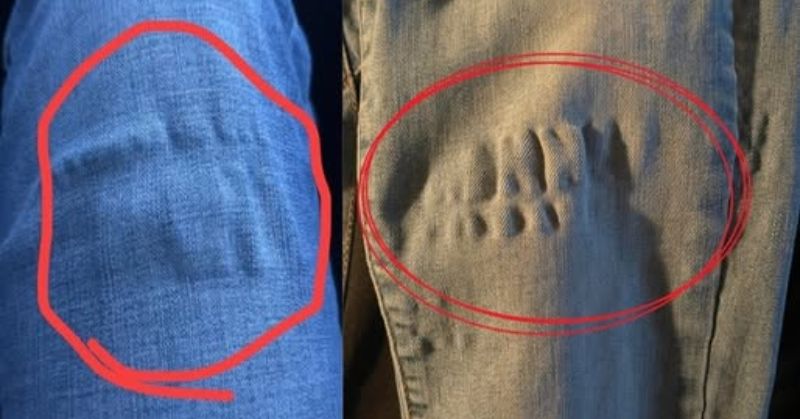Understanding and Preventing Ripples in Your Favorite Jeans
Your jeans are more than just a piece of clothing; they are a style statement, a comfort zone, and often a personal favorite in your wardrobe. However, it can be disheartening to discover that your beloved pair has developed unsightly ripples or wavy lines after washing. This issue, while common, raises several questions: What causes these ripples? Are your jeans permanently damaged? Fortunately, understanding the underlying reasons can help you prevent them in the future and ensure that your denim remains in top condition.
The Science Behind Fabric Behavior
One of the primary causes of rippling in jeans comes down to fabric shrinkage and uneven drying. Denim, typically made from 100% cotton or a cotton blend, is susceptible to shrinking when exposed to heat and moisture. When you wash your jeans, especially in hot water, the cotton fibers tighten. This tightening is particularly problematic if certain sections of the fabric shrink more than others—especially around seams and reinforced areas. The resulting ripples can become quite pronounced, especially if the jeans are dried on high heat, which exacerbates the issue.
The importance of water temperature cannot be overstated. For instance, washing jeans in cold water instead of warm or hot can significantly reduce the risk of shrinkage. Cold water helps preserve the integrity of the cotton fibers and minimizes the chances of them becoming distorted. If you have ever noticed that one side of your jeans appears more wavy than the other, it is likely due to uneven shrinkage, intensified by the washing machine’s agitation and drying process.
Manufacturing Tensions: A Hidden Issue
Another contributing factor to post-wash ripples lies in the jeans’ manufacturing process. During production, different sections of the denim are sewn under various levels of tension. If this tension is not evenly distributed, the fabric can appear smooth initially. However, when washed, these areas can shift and buckle, resulting in the familiar rippling pattern. This issue is often more prevalent in less expensive jeans or those with inconsistent stitching, but even high-end brands using stretch denim can be affected.
The variation in manufacturing quality can lead to significant differences in how denim behaves after washing. For example, if a pair of jeans was assembled with excessive tension in certain seams, those areas might contract differently than the rest of the fabric when they’re subjected to water and heat. Consumer awareness is crucial here; always look for reputable brands that adhere to quality manufacturing practices, as this can save you from the frustration of dealing with ripples later on.
The Role of Stretch Denim
Modern jeans often incorporate elastane or spandex for added comfort and flexibility. While this makes the fabric more versatile, it can lead to complications over time. Stretch denim relies on a mix of synthetic fibers that behave differently from cotton during the washing process. After several washes, the outer layer can become misshapen, leading to visible ripples. This effect is particularly noticeable in thinner jeans and jeggings, where the contrast between the synthetic and natural fibers becomes more pronounced.The blend of fibers can also result in a loss of resilience. For instance, denim with a high elastane content may feel soft and stretchy initially but may not return to its original shape after washing. To combat this, consider looking for jeans labeled as “shape-retaining” or “premium stretch.” These options are engineered to withstand the rigors of washing while maintaining their form and structure. Additionally, be cautious with washing techniques; always adhere to care labels that specify the best practices for maintaining the integrity of stretch fabrics.
Washing Machine Overload: A Recipe for Disaster
Another common culprit for ripple formation is overloading the washing machine. When too many garments are crammed into the washer, there isn’t enough space for the denim to move freely. This lack of movement results in twisting and bunching, causing uneven agitation that can lead to permanent fabric distortions. Moreover, if your jeans get tangled with other items—like towels or hoodies—the twisting action can further exacerbate the issue, making it harder for them to maintain their shape.
To avoid overloading, make a habit of washing jeans separately or in smaller loads. Not only does this help maintain the jeans’ shape, but it also allows for a more thorough cleaning, as each item gets the space it needs to agitate effectively. Additionally, consider using a mesh laundry bag when washing more delicate denim to minimize friction between garments, which can lead to wear and distortion over time.
Drying Techniques Matter
The way you dry your jeans can significantly impact their condition. Tumble drying on high heat can set any shrinkage or distortion into the fabric permanently. As the fibers become brittle under excessive heat, they are more likely to hold onto wrinkles and ripples. While it might take longer, air drying your jeans can be gentler on the fabric and better maintain their original shape.
When air drying, consider hanging your jeans by the waistband to prevent any pulling or stretching. If you do choose to use a dryer, opt for a low heat setting and remove them while they are still slightly damp. This practice helps mitigate the risk of setting any wrinkles and ensures that your jeans retain their intended fit. Additionally, if you notice any ripples after washing, a gentle iron on low heat while the jeans are turned inside out can help smooth the fabric without causing additional damage.
Preventative Measures to Keep Your Jeans Looking Great
To help prevent those pesky ripples from appearing in your jeans, consider following these practical tips: wash your jeans in cold water to minimize shrinkage. Always turn them inside out before washing to reduce friction against other fabrics. Utilizing the gentle cycle and avoiding overloading the machine will also ensure that your jeans are treated with care. When drying, air drying is preferable, but if you must use the dryer, keep it on low heat and remove them while still slightly damp. If you notice any rippling after washing, a gentle iron on low heat while the jeans are turned inside out can smooth the fabric.Moreover, it can be beneficial to wash your jeans less frequently. Denim does not require the same level of washing as other fabrics; often, a simple spot clean or a hang in fresh air can suffice. By reducing the number of washes, you can prolong the life of your jeans and keep them looking fresh and stylish.

















